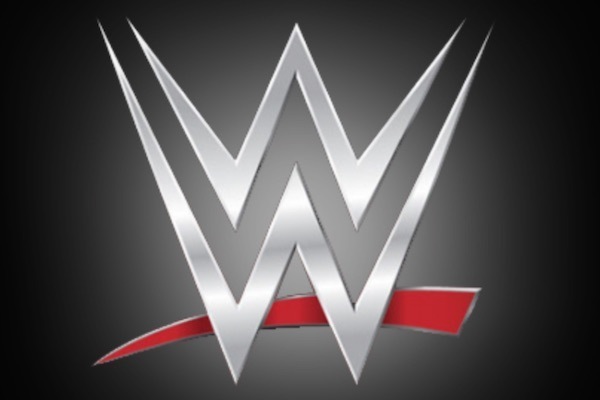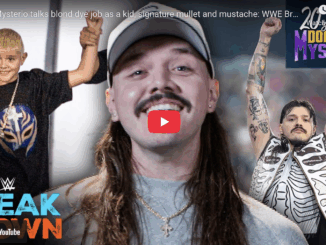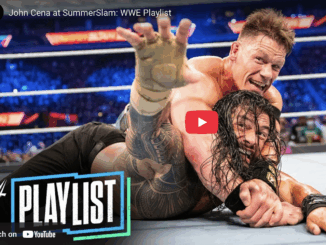
SPOTLIGHTED PODCAST ALERT (YOUR ARTICLE BEGINS A FEW INCHES DOWN)...
When watching WWE programming, especially three-hour Raws Raw with many of the quality wrestlers sidelined by injury or retirement, there is often a frustrating feeling of the in-ring matches feeling inconsequential or secondary to WWE trying to advance some sort of storyline.
Or, better put, the in-ring matches are simply there to advance a storyline or character. Like on the February 8 Raw when a heel, Kevin Owens, lost to Dolph Ziggler, a presumed babyface, after Ziggler used heel tactics to win. The idea was to have Owens lose his cool and toss the ringside area while showing Ziggler willing to do whatever it takes to get ahead at this stage of his career.
The match result of Ziggler winning by using Owens’s heel tactics was supposed to be the trigger point to get across those two character traits for Owens and Ziggler. Yet, because WWE announcers are trained to simply move from match to match trying to pack as much content into the show, they miss opportunities to actually highlight the importance of a match, its result, and consequences. There was also no follow-up on Raw to accentuate the attempted finish to the match.
The formula is character-first, storyline-second, and wrestling-third. It says so right there in WWE’s 10-K SEC filing released over the weekend following their quarter and year-end financial report.
Our creative team develops compelling and complex characters and weaves them into dynamic storylines that combine physical and emotional elements. Storylines are usually played out in the ring and unfold on our weekly television shows, culminating in monthly marquis events airing on WWE Network and also distributed via pay-per-view.
Most wrestling fans watching the program are not interested in that formula, though, capturing a disconnect between WWE and the audience. And, WWE programming does not attract enough “general TV viewers” more interested in storylines than in-ring action because, well, it’s wrestling.
It also hurts that WWE does not have respect for a true Creative process used by Hollywood or TV professionals to create compelling characters and storylines that would make for a consistently strong product. WWE, at its heart, is a wrestling promotion run by a wrestling promoter, Vince McMahon.
McMahon certainly has the most “wrestling” Creative experience of anyone in the room. His track record shows his ability to effectively manipulate the audience and deliver a strong TV product when needed. Yet, WWE continues to brand itself as a TV show when it does not have the structure to pull it off consistently on a weekly basis.
WWE has set up a system where McMahon is vital to their Creative operations, though, which is true based on the current “structure” where McMahon calls the shots and makes the final decision in lieu of an actual system.
From WWE’s 10-K SEC filing:
The unexpected loss of the services of Vincent K. McMahon could adversely affect our ability to create popular characters and creative storylines or could otherwise adversely affect our operating results. In addition to serving as Chairman of our Board of Directors and Chief Executive Officer, Mr. McMahon leads the creative team that develops the storylines and the characters for our programming (including our television, WWE Network, and other programming) and live events. From time to time, Mr. McMahon has also been an important member of our cast of performers. The loss of Mr. McMahon due to unexpected retirement, disability, death, or other unexpected termination for any reason could have a material adverse effect on our ability to create popular characters and creative storylines or could otherwise adversely affect our operating results.
A lot of this we covered in the 10,000-word “Inside WWE” PWTorch Newsletter cover story in July 2015. WWE’s Creative process is built around McMahon, not a system where top TV Creative minds can come in and flourish, especially when McMahon’s reputation is liking vanilla on Monday, then chocolate on Tuesday, and expecting Creative Team members to anticipate him changing his mind chasing a moving target.
So, when watching Raw or Smackdown or any other WWE program, remember that this is not a wrestling-first TV show. It’s storyline-driven attempting to advance characters, which “usually play out in the ring,” making what happens in the ring secondary, especially if WWE does not have someone like Daniel Bryan available to go have a cold 15-minute match and make Raw feel hot.
In an attempt to be accepted by mainstream, WWE often times butts heads with its core audience wanting to see a wrestling-first product that produces strong storylines and characters out of what happens in the ring. And, WWE does not have the structure to pull off their formula on a consistent basis, frustrating wrestling fans and TV viewers at various times watching the product.
It requires McMahon to be motivated, engaged, not distracted, and a good teammate with the Creative staff. WrestleMania Season is a good motivator, but so many injuries and unavailable talent will make this a challenging two months leading to Texas on April 3.




Leave a Reply
You must be logged in to post a comment.